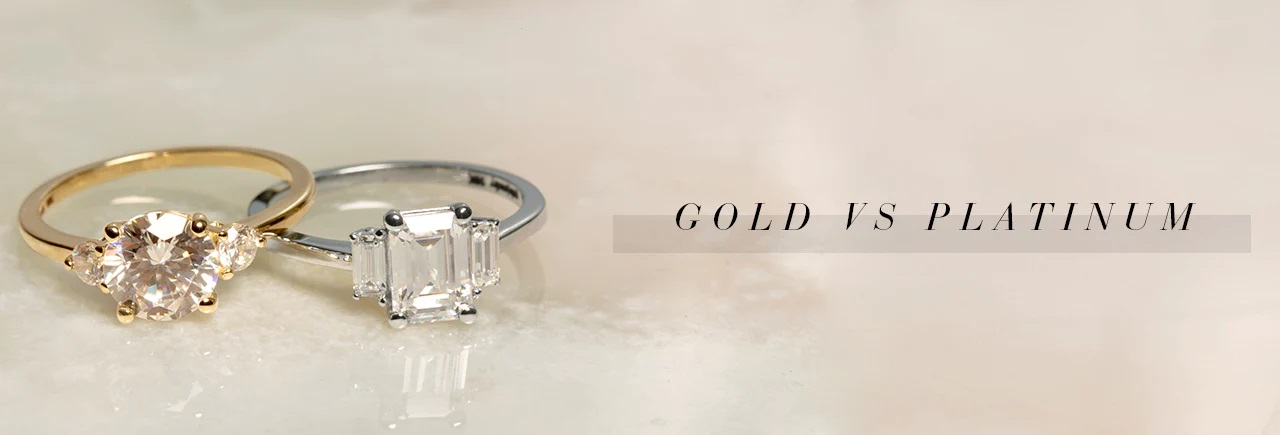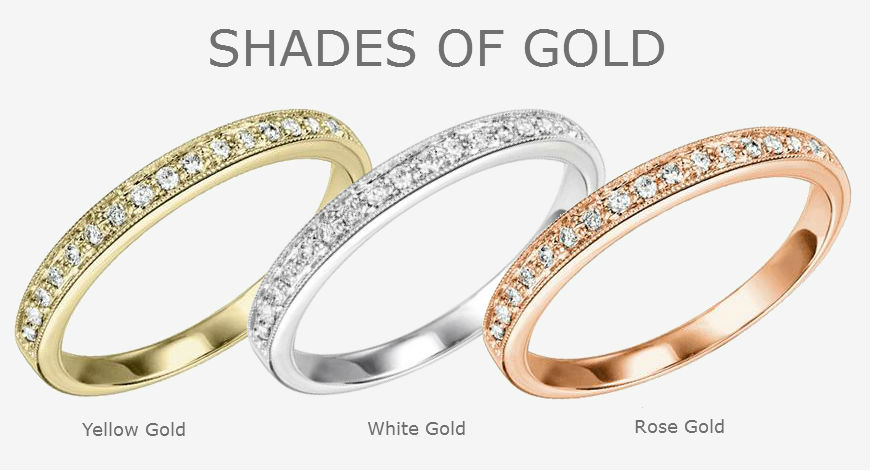Best Diamond Color for Gold vs Platinum Engagement Rings
Selecting the ideal diamond for an engagement ring involves numerous considerations, including cut, clarity, carat weight, and color. However, a key decision that often takes center stage is the choice between gold and platinum as the metal for the ring. Each metal has distinct characteristics that can influence the appearance of the diamond set within it. In this article, we delve into the intricacies of choosing the right diamond color for gold and platinum engagement rings, exploring the advantages and considerations for both options.
Choosing the Right Diamond Color for Your Gold Engagement Ring
Gold engagement rings are a timeless choice, known for their warmth and elegance. When pairing a diamond with gold, it’s crucial to consider the diamond’s color grade. Since gold has warm undertones, diamonds with slightly lower color grades (around G to J on the GIA color scale) can harmonize well, creating a beautiful contrast. The warmth of gold can mask any faint yellow tones in the diamond, allowing you to select a slightly more affordable option without compromising on aesthetics.
What’s the Best Metal for Your Ring: Gold or Platinum?
Both gold and platinum have their merits as engagement ring metals. Gold, available in various hues including yellow, white, and rose, offers a classic look and a wide array of design options. Platinum, on the other hand, is known for its durability, natural white luster, and hypoallergenic properties. The choice between the two ultimately depends on personal preference and practical considerations.

The Most Popular Diamond Gold Ring and Best Platinum Engagement Rings
For gold engagement rings, the most popular choice is often the classic round brilliant diamond. This cut’s versatility complements the timeless elegance of gold settings. On the platinum side, princess and cushion cuts are highly favored, as the metal’s cool tone enhances the brilliance of these diamond shapes.
Advantages and Disadvantages of Gold and Platinum Diamond Engagement Rings
Gold:
- Advantages: Offers a variety of colors to suit individual preferences. Generally more affordable than platinum. Its malleability allows for intricate designs.
- Disadvantages: Can scratch and wear down over time due to its softness. Requires more maintenance to retain its appearance.
Platinum:
- Advantages: Exceptionally durable and naturally hypoallergenic. Maintains its luster over time without fading. Ideal for those with sensitive skin.
- Disadvantages: Heavier and more expensive compared to gold. May develop a patina over time, which some people find appealing, while others prefer the original luster.
How to Choose the Best Diamond Color for Gold Engagement Rings
Selecting the right diamond color for a gold engagement ring involves considering the interaction between the diamond’s color grade and the warmth of the gold. Here’s a step-by-step guide to help you make the best choice:
1. Understand the Diamond Color Grading Scale: Diamonds are graded on a color scale from D (colorless) to Z (light yellow or brown). The less color a diamond has, the higher its grade. For a gold engagement ring, diamonds in the near-colorless range (G to J) are often recommended.
2. Consider the Gold Hue: Different gold hues (yellow, white, and rose) have distinct interactions with diamond colors. For yellow and rose gold, slightly warmer diamond colors (G to I) can complement the metal’s warmth. For white gold, diamonds with less color (D to F) can enhance the metal’s cool tone.

3. Balance Personal Preference: Ultimately, the choice of diamond color is a matter of personal preference. Some individuals prefer the contrast between a warm diamond and yellow or rose gold, while others lean toward a more traditional and colorless look with white gold.
4. View Diamonds in Various Lighting: Examine diamonds in different lighting conditions to observe how the color appears. Natural daylight and indoor lighting can affect the perceived color of the diamond.
5. Trust Your Eyes: When comparing diamonds of different colors, trust your eyes and choose the one that appears most visually appealing to you. A slight variation in color grade may not be noticeable to the naked eye, especially once the diamond is set in a ring.
How to Choose the Best Platinum Engagement Ring
Choosing the best platinum engagement ring involves considering factors beyond the diamond, as platinum itself is a critical component. Here’s a guide to help you navigate your platinum engagement ring selection:
1. Evaluate Platinum’s Durability: Platinum is a durable metal that’s less prone to wear and tear compared to other metals. Its density ensures that it maintains its structural integrity over time.
2. Consider Your Lifestyle: If you lead an active lifestyle, platinum’s durability can be advantageous. It’s particularly suitable for those who engage in activities that may subject the ring to potential impact or abrasion.
3. Appreciate the Natural Luster: Platinum has a natural white luster that enhances the brilliance of diamonds. This attribute makes it an ideal choice for showcasing the diamond’s brilliance and fire.
4. Factor in Skin Sensitivity: Platinum is hypoallergenic, making it an excellent choice for individuals with sensitive skin. It reduces the risk of allergic reactions or skin irritations.
5. Embrace the Patina: Platinum develops a patina over time due to surface scratches. Some individuals appreciate this aged, matte finish, while others prefer the original high-polish look. Keep your personal preference in mind.
6. Consult with Experts: When selecting a platinum engagement ring, consult with jewelers who specialize in platinum settings. They can guide you on design options and maintenance requirements.
Why Choose a Platinum Engagement Ring?
Platinum’s allure lies in its unmatched durability, making it a symbol of enduring love. Its hypoallergenic properties are a boon for those with sensitive skin, ensuring comfort and longevity. The metal’s white hue enhances the diamond’s brilliance and complements a wide range of styles. If you prioritize longevity, durability, and a timeless appearance, a platinum engagement ring could be the perfect choice.
Conclusion
Selecting the best diamond color for your gold or platinum engagement ring requires a thoughtful balance between personal preference, the diamond’s characteristics, and the metal’s qualities. Whether you opt for the warmth of gold or the enduring elegance of platinum, both choices offer unique advantages that can enhance the beauty of your engagement ring. In the end, the decision is a testament to your individual style and the everlasting commitment the ring represents.
…
Read More